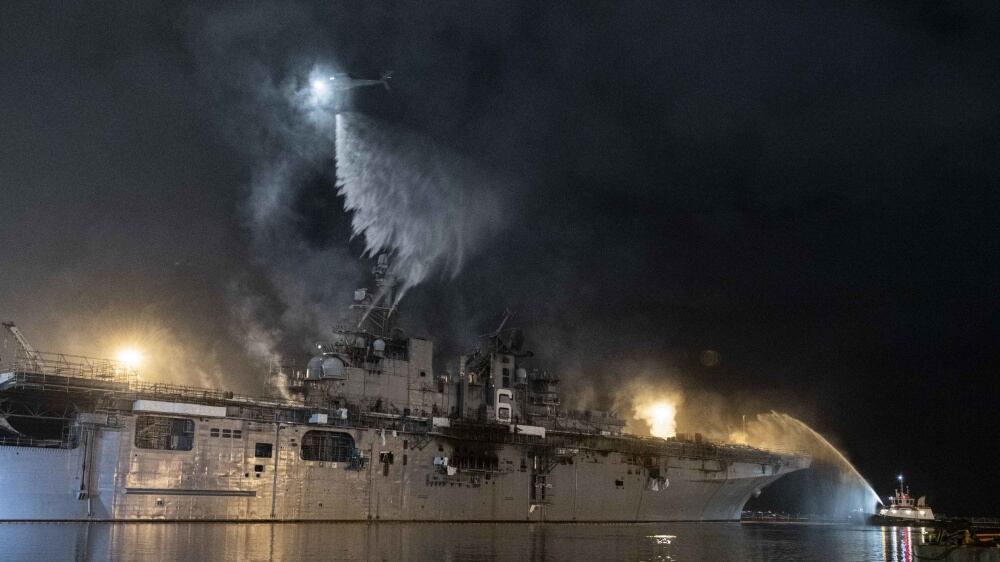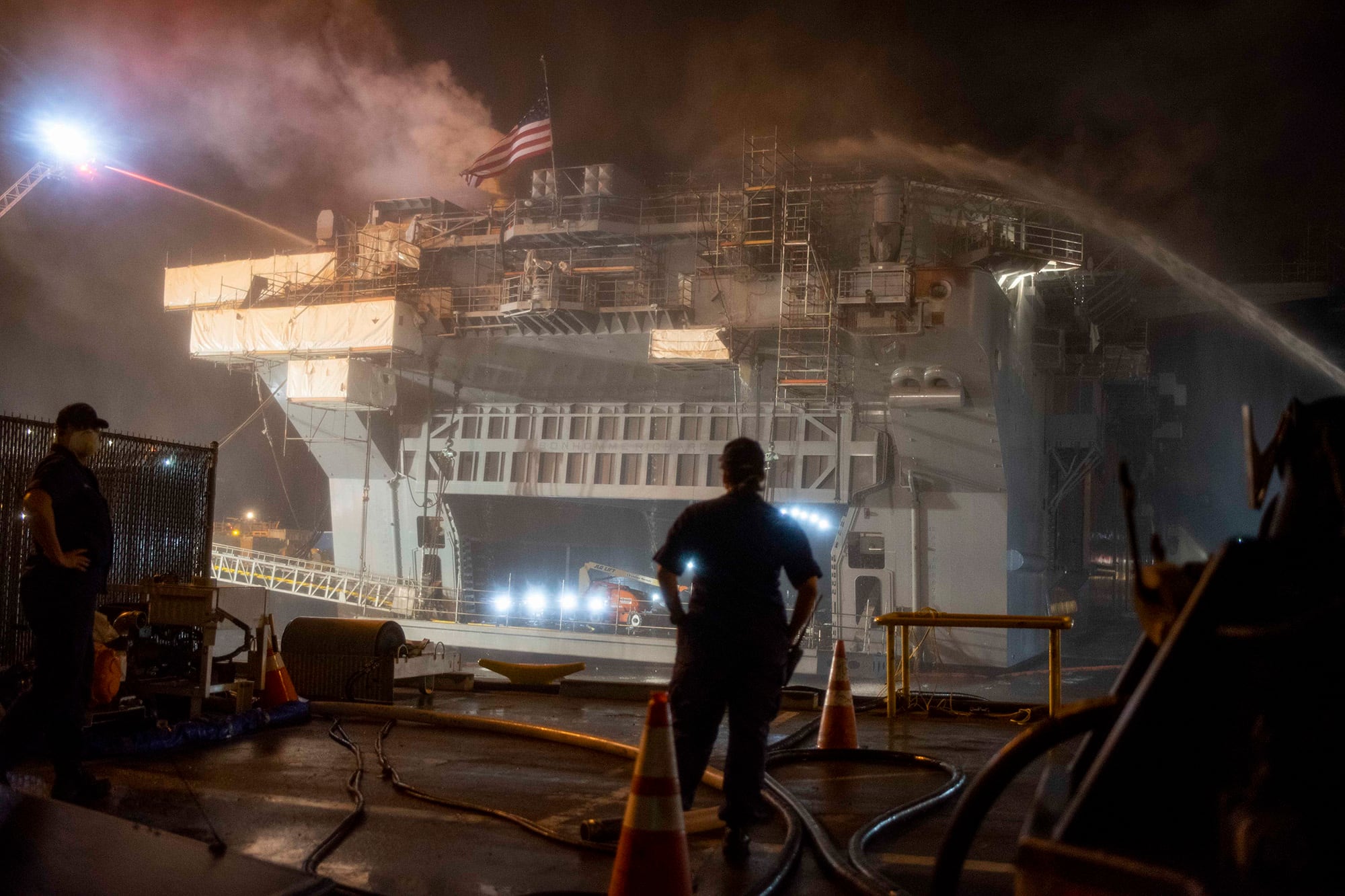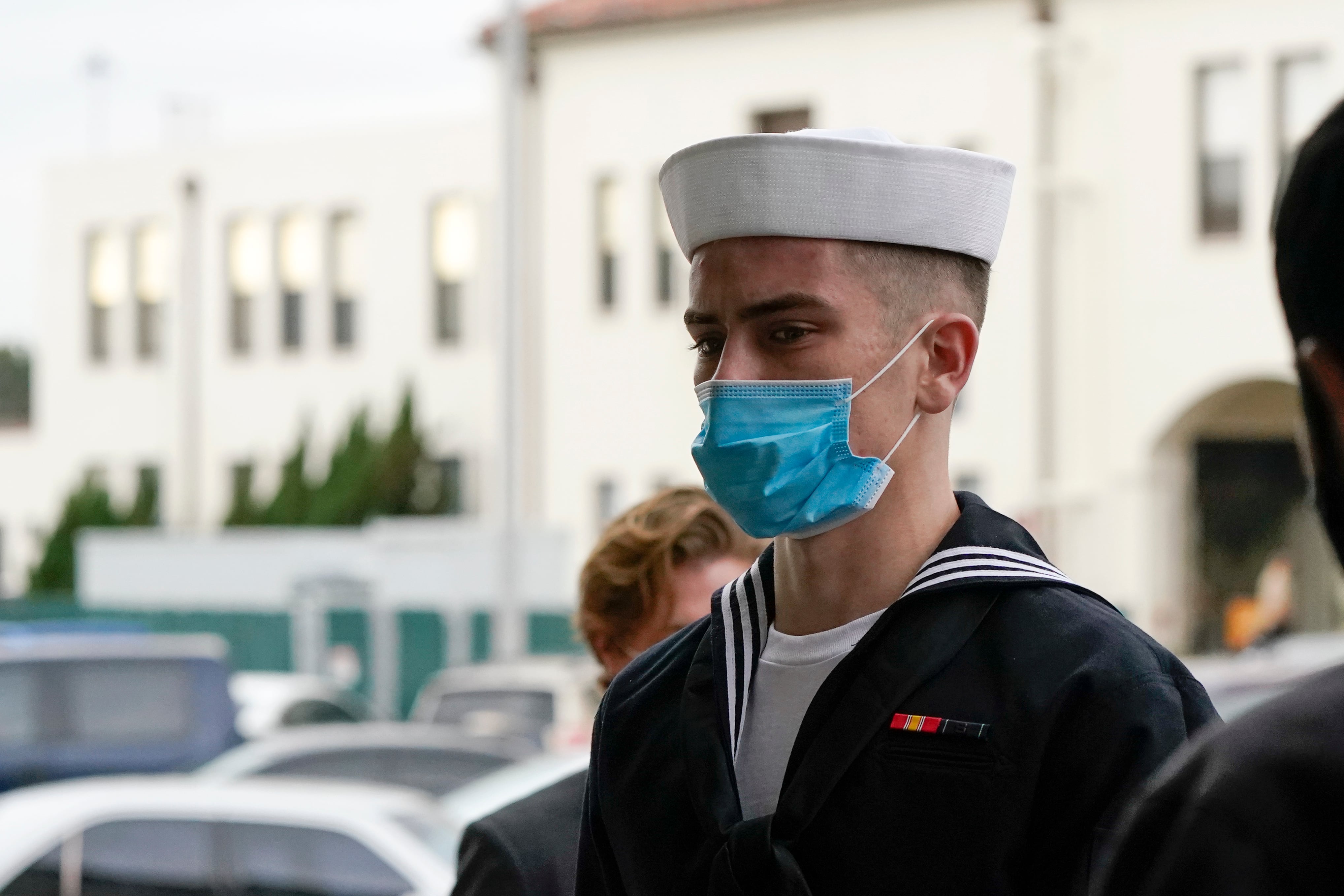SAN DIEGO — An electrical engineer who examined the amphibious assault ship Bonhomme Richard after it was destroyed by fire last year testified Wednesday that it might have started with an electrical malfunction rather than arson.
Andrew Thoresen was hired by the defense attorneys representing the junior sailor accused of setting the fire aboard the ship. He told a military court during a preliminary hearing that he found highly combustible lithium ion batteries with their caps blown off and a copper cable with a melted end in the engine of a forklift, indicating it may have sparked the fire.
“They cannot be eliminated” as a source of the fire, said Thoresen, who has examined 3,000 fire scenes as a forensic electrical engineer.
Both the batteries and forklift were inside the lower vehicle storage area of the warship where a military fire investigator determined the July 12, 2020, fire was started by someone who ignited carboard boxes stored there.
The testimony came in a military court hearing to determine whether there is enough evidence for Ryan Sawyer Mays to face a military trial.
Mays is charged with aggravated arson and the willful hazarding of a vessel. The hearing that started Monday is expected to wrap up as soon as Wednesday. A final decision is not expected for weeks.
RELATED

Mays, 20, has denied igniting the blaze that burned for nearly five days on the USS Bonhomme Richard, injuring dozens of personnel aboard and sending acrid smoke wafting over San Diego. The amphibious assault ship was damaged so badly that it had to be scuttled. The blaze was one of the worst noncombat warship disasters in recent memory.
Mays was a seaman apprentice at the time and has since been promoted to seaman.
Defense attorneys have argued there is no physical evidence tying Mays to the crime. Much of the case relies on sailors’ accounts of that morning.
A key witness for the Navy testified he is certain he saw Mays in the area where the flames ignited and another says the suspect mumbled “I’m guilty” on the way to the brig after being taken into custody.
Petty Officer 3rd Class Kenji Velasco said the person he reported seeing go down to the lower vehicle area before the fire started was wearing blue work coveralls; other sailors said they saw him in a green camouflage uniform that day.
Petty Officer 2nd Class Matthew Betz testified Wednesday that Velasco initially told him he did not recognize the person he saw go down below before the fire. But Betz told the court he considered Velasco to be “really” truthful and found Mays would lie.
Betz said Mays told him he had to drop out of SEAL training because he got injured during the program’s “Hell Week,” which is the most grueling part that comes at the end of the weeks-long training. Mays actually dropped out voluntarily after five days.
One thing that the sailors have been consistent about in their testimonies is that Mays was not liked by many on the ship and did not want to be there.
Betz told investigators Mays was “selfish, whiney and mad because he dropped out of the SEALs.”
Navy prosecutors have argued Mays set the ship on fire because he was angry about being assigned to the ship.
On Tuesday Carissa Tubman, a sailor who was assigned to escorting Mays to the brig on Aug. 20, 2020, testified that she heard a stunned Mays mumble to himself: “I’m guilty, I guess. I did it.” Then she said he mumbled some more before she heard him say: “It had to be done.”
Defense attorneys said he was joking and speaking sarcastically after being surprised that he was being locked up.
The defense has challenged several of the government’s witnesses about their accounts given to investigators a year ago, after several of them, including Velasco, recalled details differently or not at all during the hearing.
RELATED

About 160 sailors and officers were on board when the fire started on the 840-foot (256-meter) vessel, which had been docked at Naval Base San Diego while undergoing a two-year, $250 million upgrade.
Officials assessing the ship’s damage found three of four fire stations on the ship had evidence of tampering: Fire hoses had been disconnected and one was cut, according to court documents.
Defense attorney Gary Barthel said thousands of contractors were coming and going from the ship at the time. Some were caught smoking on board in violation of the rules, and there was a problem with brass parts being stolen and contractors cutting hoses.
Barthel said there was a roster with 12,000 contractors but “there was no way to monitor who went on and off the ship.”




